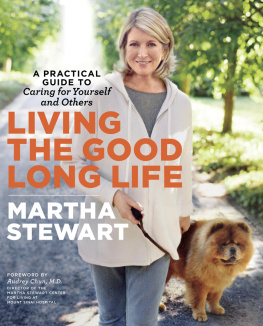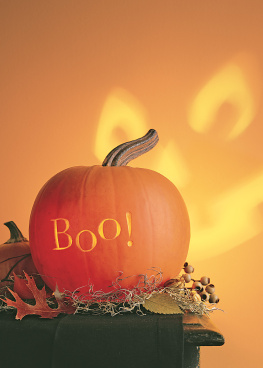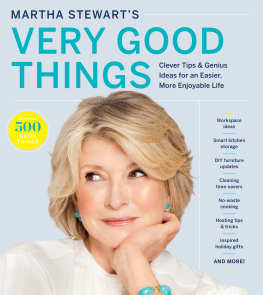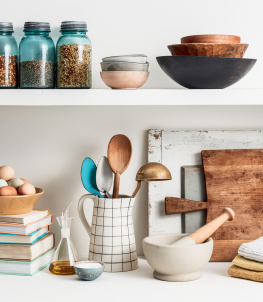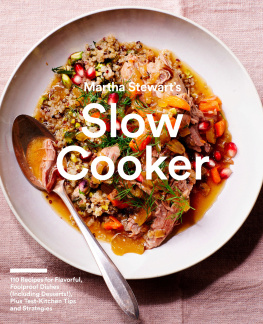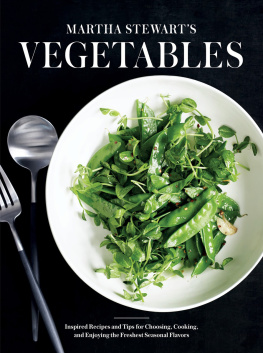Martha Stewart - Martha Stewarts Cupcakes
Here you can read online Martha Stewart - Martha Stewarts Cupcakes full text of the book (entire story) in english for free. Download pdf and epub, get meaning, cover and reviews about this ebook. year: 2011, publisher: Crown Publishing Group, genre: Home and family. Description of the work, (preface) as well as reviews are available. Best literature library LitArk.com created for fans of good reading and offers a wide selection of genres:
Romance novel
Science fiction
Adventure
Detective
Science
History
Home and family
Prose
Art
Politics
Computer
Non-fiction
Religion
Business
Children
Humor
Choose a favorite category and find really read worthwhile books. Enjoy immersion in the world of imagination, feel the emotions of the characters or learn something new for yourself, make an fascinating discovery.

- Book:Martha Stewarts Cupcakes
- Author:
- Publisher:Crown Publishing Group
- Genre:
- Year:2011
- Rating:3 / 5
- Favourites:Add to favourites
- Your mark:
- 60
- 1
- 2
- 3
- 4
- 5
Martha Stewarts Cupcakes: summary, description and annotation
We offer to read an annotation, description, summary or preface (depends on what the author of the book "Martha Stewarts Cupcakes" wrote himself). If you haven't found the necessary information about the book — write in the comments, we will try to find it.
Martha Stewarts Cupcakes — read online for free the complete book (whole text) full work
Below is the text of the book, divided by pages. System saving the place of the last page read, allows you to conveniently read the book "Martha Stewarts Cupcakes" online for free, without having to search again every time where you left off. Put a bookmark, and you can go to the page where you finished reading at any time.
Font size:
Interval:
Bookmark:
Acknowledgments
Many people contributed to the creation of this wonderful book, particularly food and entertaining editorial director Jennifer Aaronson; special projects group editors Evelyn Battaglia, Ellen Morrissey, Sarah Rutledge Gorman, Christine Cyr, and Stephanie Fletcher; art directors William van Roden, Matt Papa, Yasemin Emory, and Amber Blakesley; editorial and creative director Eric A. Pike; and photographers Con Poulos and Raymond Hom, along with photo assistants Marc McAndrews and Christina Holmes. Others who provided ideas, guidance, and support include:
The talented team at Martha Stewart Living Omnimedia
Mary Cahill
Denise Clappi
Marissa Corwin
Alison Vanek Devine
Lawrence Diamond
Catherine Gilbert
Katie Goldberg
Heloise Goodman
Elizabeth Gottfried
Julie Ho
Marcie McGoldrick
Heather Meldrom
Sara Parks
Ayesha Patel
Dawn Perry
Lucinda Scala Quinn
Megan Rice
Gael Towey
Our partners at Clarkson Potter
Rica Allannic
Amy Boorstein
Angelin Borsics
Doris Cooper
Jenny Frost
Derek Gullino
Mark McCauslin
Marysarah Quinn
Lauren Shakely
Patricia Shaw
Jane Treuhaft
Kate Tyler
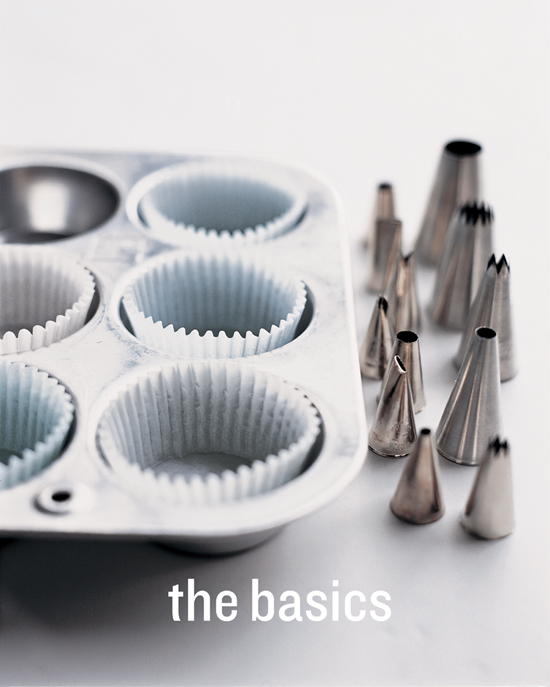
Anyonewhether a dedicated hobbyist or the occasional home bakercan make cupcakes. Most people have all the necessary equipment already in their kitchen cabinets: measuring cups and spoons, a sturdy mixing bowl or twoand, of course, muffin tins. If youre considering buying new items, invest in the best ones you can afford; good-quality pans and tools will withstand years or even generations of baking. In addition to laying out the supplies youll need, these pages will familiarize you with the basic ingredients and take you step by step through techniques for mixing and decorating. Youll also find ample recipes for frostings, fillings, and other embellishments. Use them where suggested throughout this bookor adapt them as you wish to create something new and unexpected.
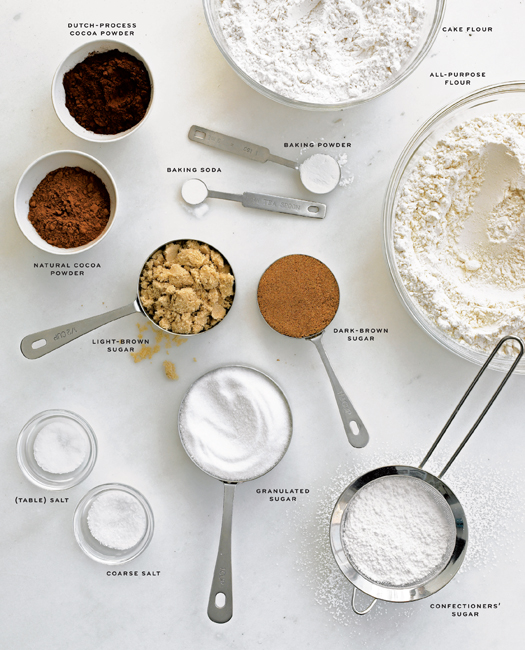

COCOA POWDER Cocoa powder is made by removing anywhere from 65 to 90 percent of the cocoa butter from chocolate, then finely grinding what remains. The result is an intensely flavored powder that gives baked goods a deeper, rounder flavor than when made with solid chocolate alone. Youll find two types of cocoa powder: natural cocoa (sometimes called nonalkalized cocoa), and Dutch-process cocoa, which is treated with an alkaline solution that reduces cocoas natural acidity and gives the powder a milder flavor and redder color. Unless a recipe specifically calls for a particular type of cocoa, you can use either. Before using any cocoa powder, you may want to sift it with a fine sieve to remove any lumps.
sugar (due to the presence of molasses), to hasten the leavening action and to produce better flavor. Baking powder essentially takes care of this by combining baking soda with the precise amount of acid (usually cream of tartar) needed to achieve the same result. For this reason, baking soda and baking powder are not interchangeable (although they are often combined in recipes to produce the proper texture). Store both in a cool, dry place, and note the use-by date on the label. To test for potency, stir teaspoon baking powder into cup hot water; the water should instantly form bubbles. For baking soda, add teaspoon white vinegar to the hot water before testing.
salt. Always sift cake flour, which is prone to clumping, as indicated in each recipe; all-purpose flour does not need to be sifted (unless specifically instructed). Use only dry measuring cups for flour, and never shake the cup or tap it on the counter to make level; both actions will lead to inaccurate measurements. Instead, fill the cup to overflowing, then level with a straightedge.
SUGAR
White granulated sugar is the most widely used sugar, especially for baking. Made from refined sugarcane or sugar beet, it serves as a base for most other types of sugars.
Brown sugar is a combination of granulated sugar and molasses. Because dark-brown sugar has a higher molasses content than light-brown sugar, it is deeper in color and flavor. Use light-brown sugar when you want a milder molasses taste. Brown sugar labeled granulated is processed so the grains flow freely; do not substitute it in recipes. Pack brown sugar tightly in the measuring cup to eliminate air pockets. After opening, seal the package securely, so the sugar does not harden. To soften, place a wedge of apple in bag, and reseal; leave a day or two, until sugar is sufficiently soft again, then remove apple.
Confectioners sugar often forms clumps, so you may want to sift it with a fine sieve before using.
SALT A small amount of salt is usually added to cake batters (and some frostings) to enhance their flavors. Our recipes call for salt (table salt) or coarse salt (kosher salt). If substituting one for the other in a recipe, use a bit less table salt than the amount of coarse salt called for (and vice versa).
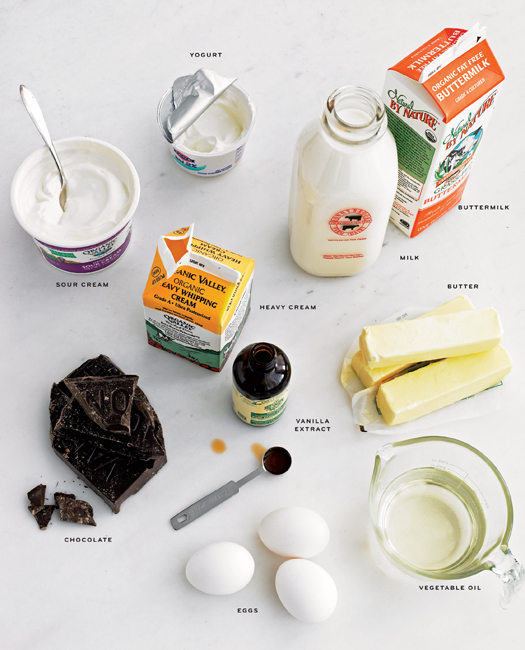
yogurt (which also keep baked goods moist), adds subtle flavor. Although some dairy products can be substituted for others, it is best to use what the recipe calls for to ensure proper results, especially for buttermilk (as the amount of baking soda would have to be adjusted). In a pinch, you can make your own buttermilk by adding 1 tablespoon white vinegar or lemon juice to 1 cup regular milk (adjust the amounts of each depending on how much buttermilk is called for); let milk mixture sit for 10 minutes, or until sufficiently thickened, before using in a recipe.
buying chocolate for baking, look for the best quality bar, block, or chips you can find; the higher the percentage of cacao (or chocolate liquor), the richer and deeper the taste. Milk chocolate must only contain 10 percent chocolate cacao, while dark chocolate (unsweetened, bittersweet, and semisweet), as its name suggests, has a higher cacao contentanywhere from 35 to 70 percent, depending on the quality. (White chocolate is not technically considered to be chocolate, since it contains no cacao.) Some premium brands to look for are Valhrona, Callebaut, El Ray, and Scharffen Berger. Chocolate chips are simply morsels of chocolate that are designed to hold their shape during baking, so they contain less cocoa butter than block or bar chocolate.
EXTRACTS Extracts are concentrated flavorings made by steeping and aging an ingredient in liquid (usually alcohol). Always choose extracts labeled pure, which have a sharper, cleaner flavor. Vanilla extract is the one most commonly used in baking, as it adds subtle but distinctive flavor; extracts made with vanilla beans from Madagascar, Tahiti, and Mexico are worth the extra cost. Some of the recipes in this book call for vanilla beans instead of extract, as the seeds import a deeper, more complex flavor and fragrance (but you can generally substitute 1 tablespoon extract for each whole bean called for). To release the seeds, lay the bean flat on a cutting board; holding one end, slice it open lengthwise with a paring knife, then run knife along each cut side. You can save the pod for making vanilla sugar to use in baking or sweetening drinks: Place split pod in a jar of sugar, seal lid, and leave for at least a week (shake daily to distribute flavor); use sugar within several months.
Next pageFont size:
Interval:
Bookmark:
Similar books «Martha Stewarts Cupcakes»
Look at similar books to Martha Stewarts Cupcakes. We have selected literature similar in name and meaning in the hope of providing readers with more options to find new, interesting, not yet read works.
Discussion, reviews of the book Martha Stewarts Cupcakes and just readers' own opinions. Leave your comments, write what you think about the work, its meaning or the main characters. Specify what exactly you liked and what you didn't like, and why you think so.

